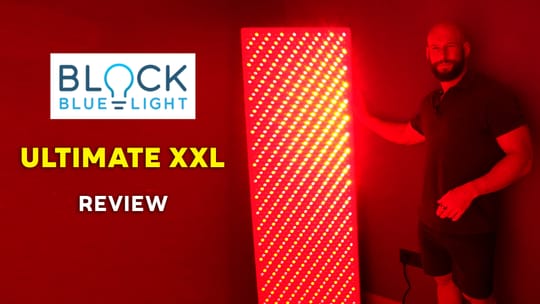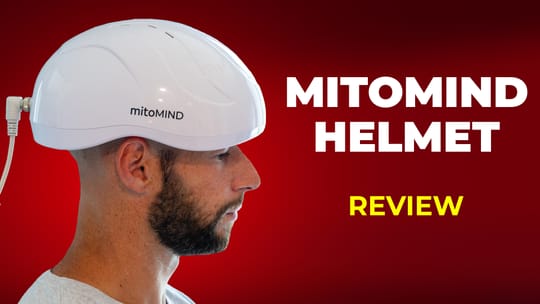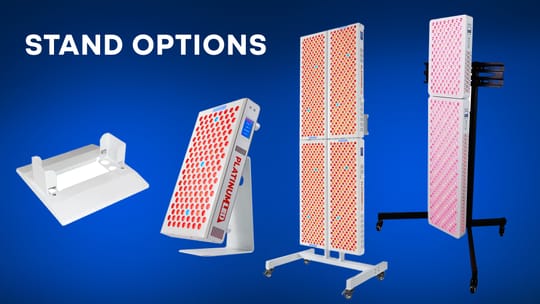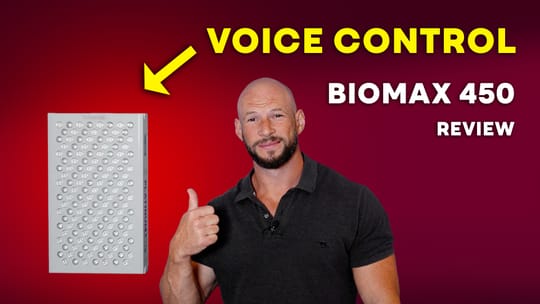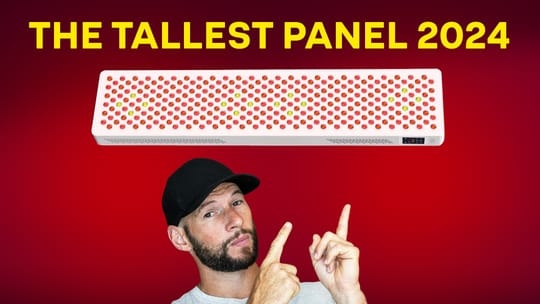Hello! I have been in the red light therapy space for many, many years now, but this is the first time I have tested and used a red light therapy brain health device that is worn like a helmet.
It's not going to help with your sore knee or your sunburn. It is designed to help your brain perform better which is valuable since our brains not only are responsible for our conscious thoughts, but also orchestrate every other part of our physical functioning and emotional wellbeing.
I will be unpacking the unique features of this light therapy device as well as comparing and contrasting it with a regular body panel.
So, what do we know about this headgear device? Well, it allows us to tap into the benefits of transcranial photobiomodulation from the comfort of our homes.
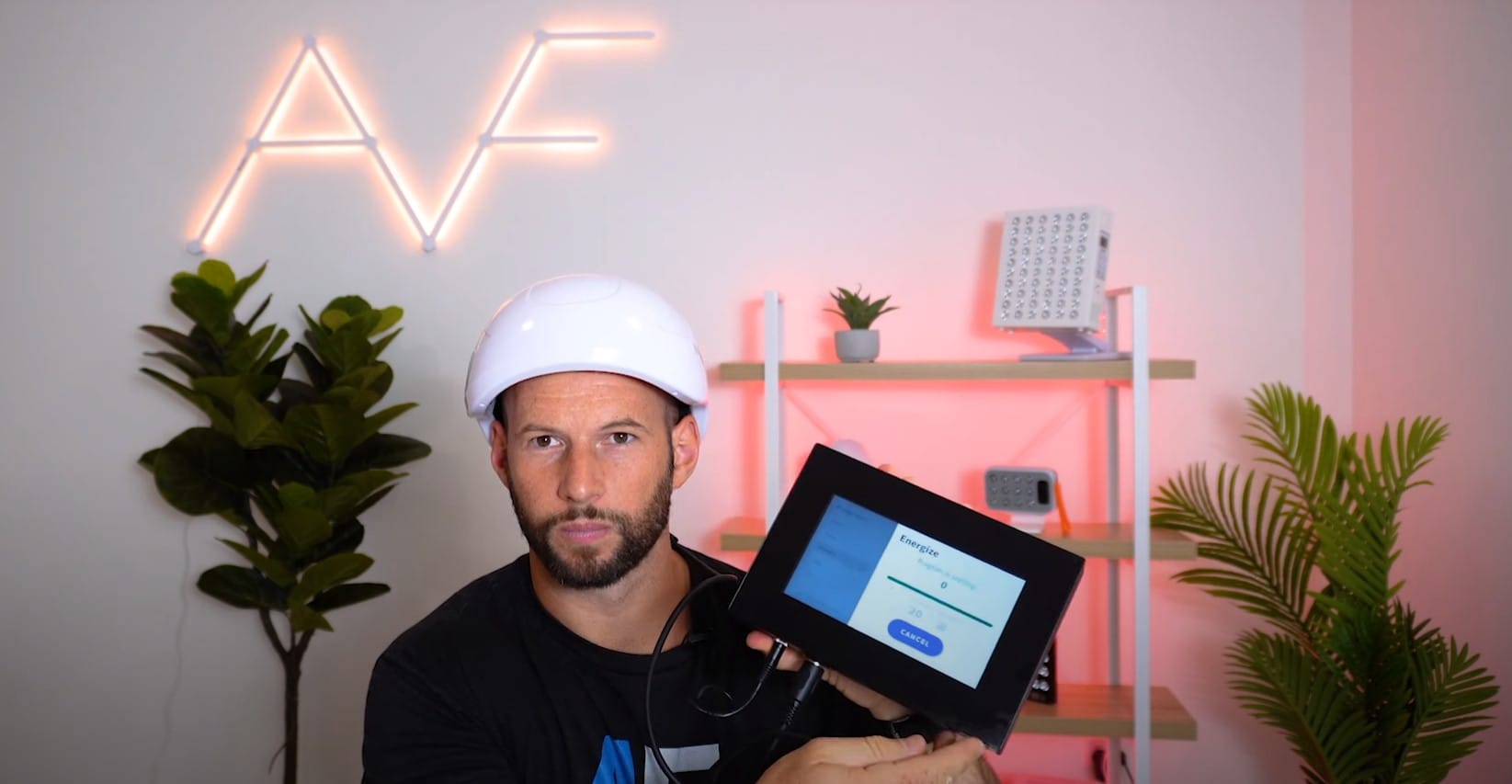
The Neuradiant 1070 is from a company called Neuronic. They were founded with a singular focus and that was to keep the brain capacity and brain function high throughout all stages of life. Light therapy (a.k.a. photobiomodulation or low level laser therapy) is rather effective at doing this.
Headgear Closer Look
It's simply a plastic casing shaped like a helmet with a whopping 256 LEDs inside it! Now, these LEDs are emitting near infrared light. There are a couple of red light LEDs shining in there. Those red light LEDs are purely to show the user that yes, the unit is on, and the LEDs are running because near infrared is invisible to our eyes.
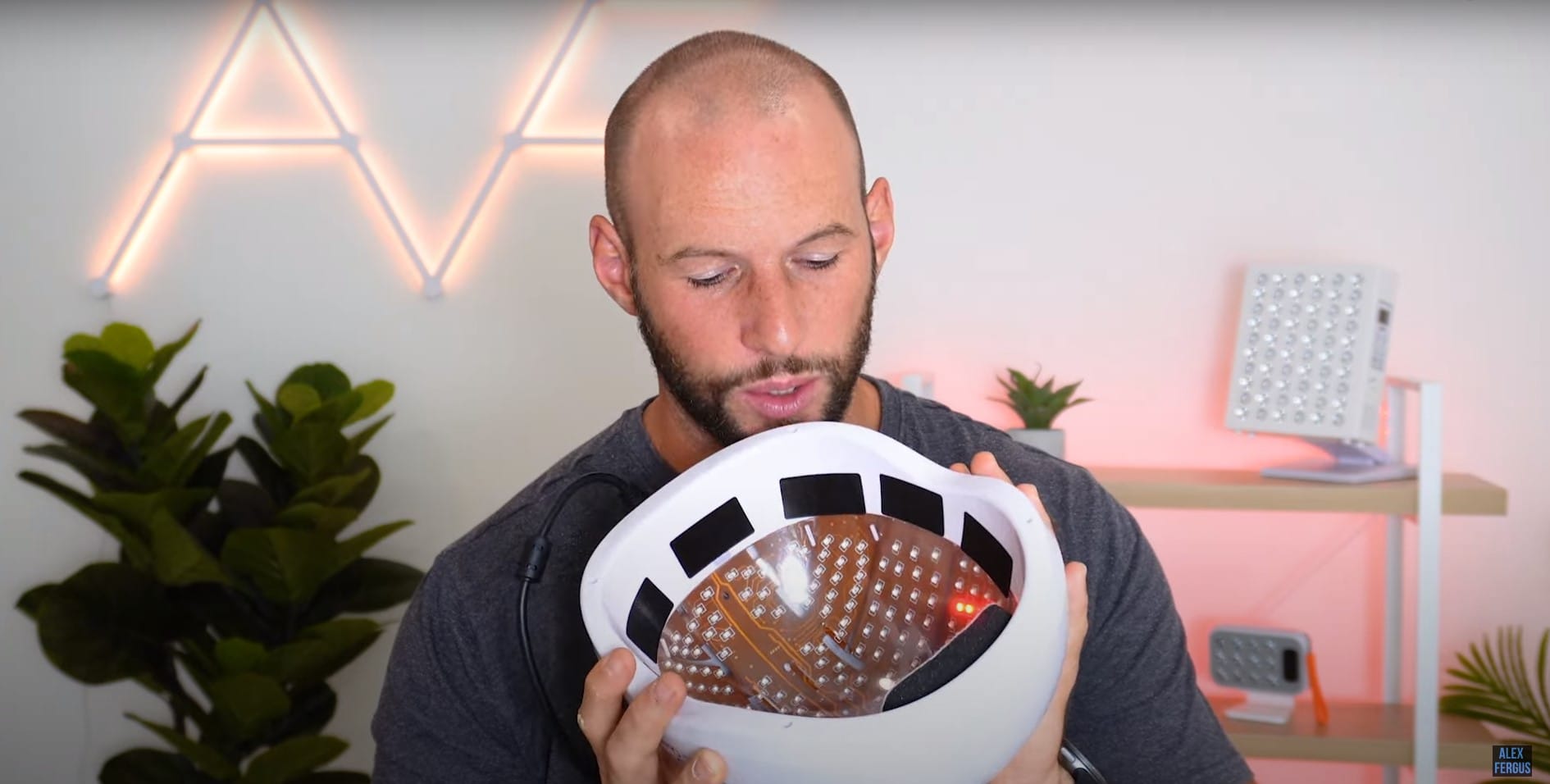
It is designed to target all areas of the head to benefit the brain. Now, the company claims it has a spectral output of 1020 nanometers (nm) right through to 1120nm peaking at 1070nm. Hence the name: Neuradiant 1070.
However, when I did some testing with my spectrometer, I found that the peak was more around 1030nm to 1040nm. My device doesn't detect beyond 1050nm. But I did notice it dropped off pretty fast at that 1050nm mark.
So, that is something I'm going to ask them. I will be doing an interview with one of the product developers to dive deeper into the details of this unique product.
Power & Pulsing Features
Remember, my spectrometer testing device doesn't show 1070nm. So, these are uncharted waters we're in now.
Anyway, we'll discuss why Neuronic has chosen the longer near-infrared light wavelengths instead of the traditional 800nm or the 850nm light.
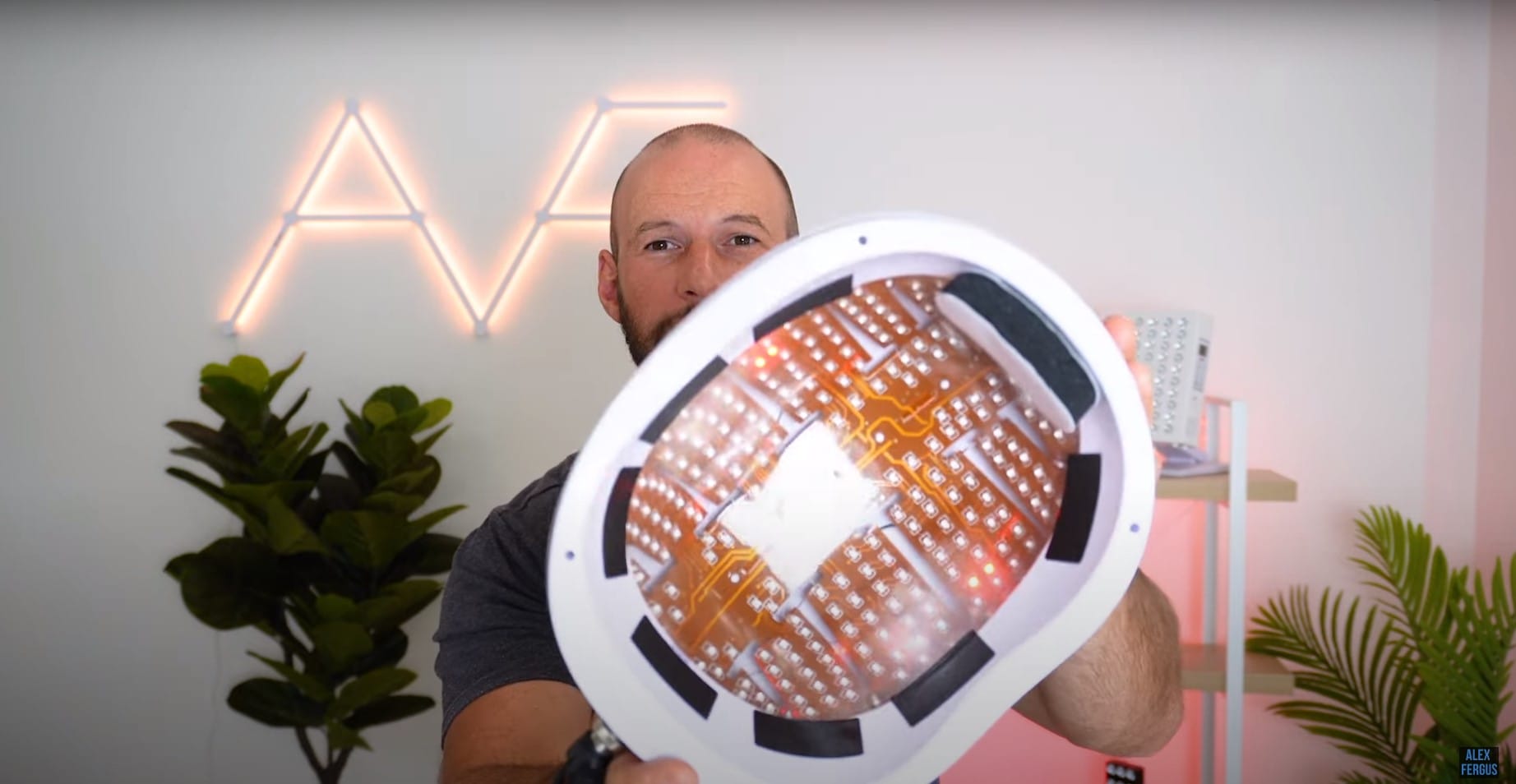
The LEDs in this headgear give you the option of pulsing light as do some light therapy panels. The pulsing rate can either be set to continuous which means no pulsing, or it can be set from one hertz (Hz) right through to 9999Hz which is quite amazing!
What about irradiance? Well, the website states that it has a figure of 20 to 40 milliwatts (mW) over centimeters squared. That's as strong as what we see in some older-generation LED panels, of course.
I'd be surprised if we are actually getting those numbers though because 20–40mW/cm2I'd be surprised if we are actually getting those numbers, though, because 20–40mW/cm2 would be quite high, considering it is used directly against the head instead of several inches away. Unlike a panel, this doesn't have any fans, so there is a bit of heat build up.
Headgear Benefits & Modes
So, why would you use a light therapy device shaped like a helmet? Studies show infrared light improves blood flow circulation in the brain, which will help optimize and improve cognitive and immune function.
How do you control this unit? Well, there are no buttons on the device itself. Instead, you plug it into this rather large controller which then plugs into the power supply. It has a touchscreen menu, so you can go through and select from one of four different modes.
Now, these modes are preset in the controller. I'll run through each of them quickly. First up, you have Peace. This is a nine-minute session designed to enhance relaxation and reduce stress.
It's low intensity and has a pulse rate of 10 hertz (Hz). This pulse rate is associated with the alpha brain wave state which is your deep relaxation brain state, so it would be good to use in a meditation practice.

Next up, we have Focus. This helps with clarity and concentration. It uses 40Hz,, which is associated with gamma brain waves. This would be a good one to use to boost alertness and reaction time.
Then we have a short, high intensity, 3-minute session called EnergizeThen we have a short, high-intensity, 3-minute session called Energize. It is designed to help boost blood flow in the brain. The 20Hz pulse rate here is associated with beta brainwave states. This provides increased attention, clarity, and cellular energy production.
Finally, we have "Glow." This one is designed to help revitalize cellular health. It's a 10-minute session with continuous light. There's no pulsing here. It's more of a general brain wellness program. There are also some benefits for scalp and hair health in this program as well as well.
Finally, there are clinical protocols. Those have to be unlocked, and that feature is only for medical professionals.
Why The 1070nm Wavelength?
Let's go back and look at why Neuronic has used wavelengths around 1000nm in the infrared range instead of the more traditional and typical 800nm or 850nm wavelengths.
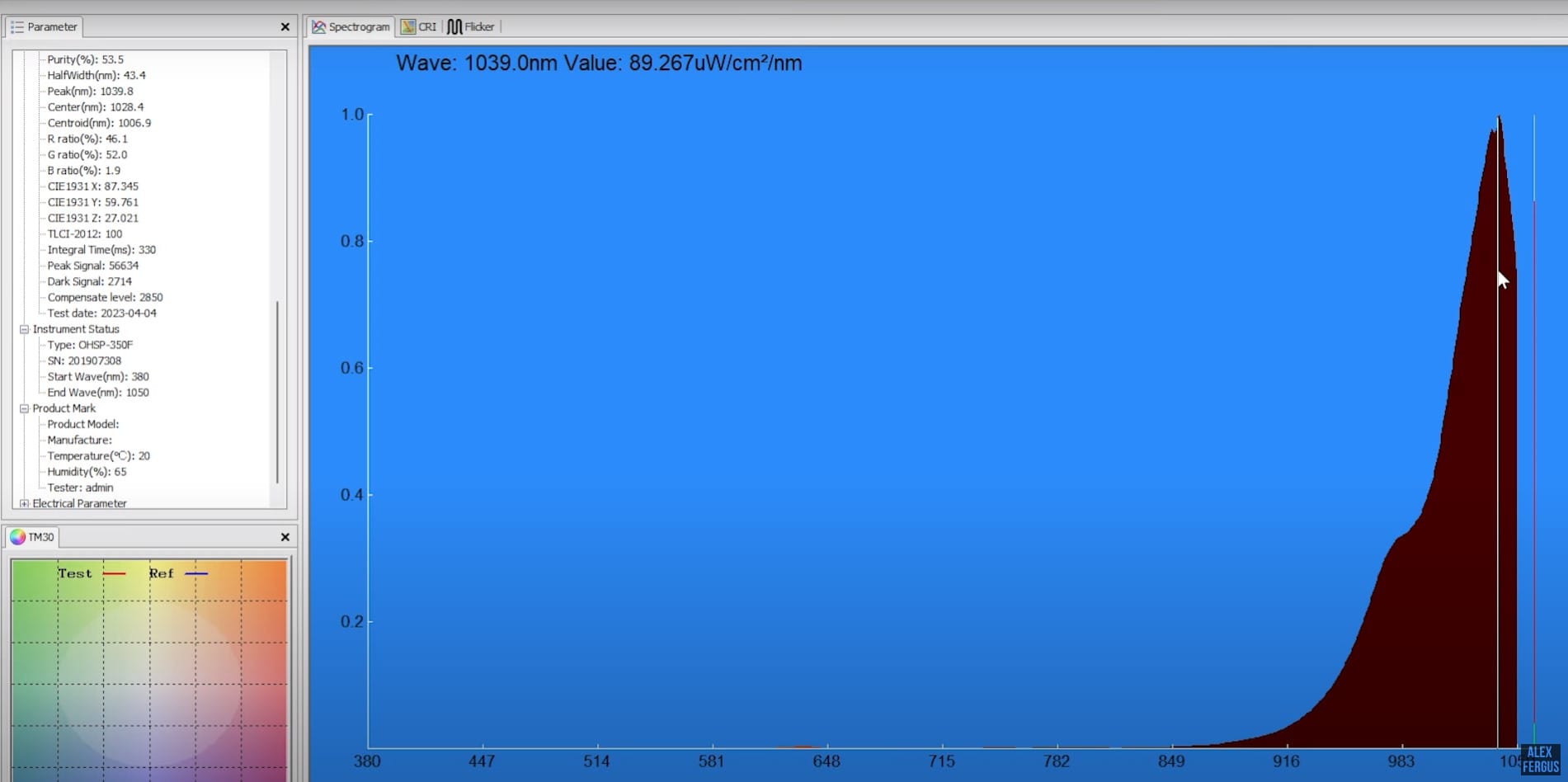
Well, the larger wavelengths used in this device does allow deeper penetration into the body and the brain. Now the goal with this light therapy device is to reach the mitochondria in the brain.
The mitochondria are the cells' power plants essentially. Mitochondria are extremely receptive to some forms of light in particular red light and near infrared light.
Why do we want to get beneficial light to the mitochondria? Well, mitochondrial dysfunction appears to be a common factor in a lot of brain health issues especially neurodegenerative diseases.
In addition to the boost in energy production in the brain, there's also another benefit and that's increased blood flow.
You see, some people refer to light therapy directed into the brain as a way of charging the brain or kick-starting the brain's metabolic processes which is effectively allowing better delivery of nutrients and also removal of waste products.
Near infrared light therapy on the brain is nothing new. It has been around for a long time. There are hundreds if not thousands of studies on this topic as well.
It's just that now we have finally reached the stage with LEDs and manufacturing processes that the everyday consumer can finally buy a device like this and wear it in their in their own home to reap the benefits.
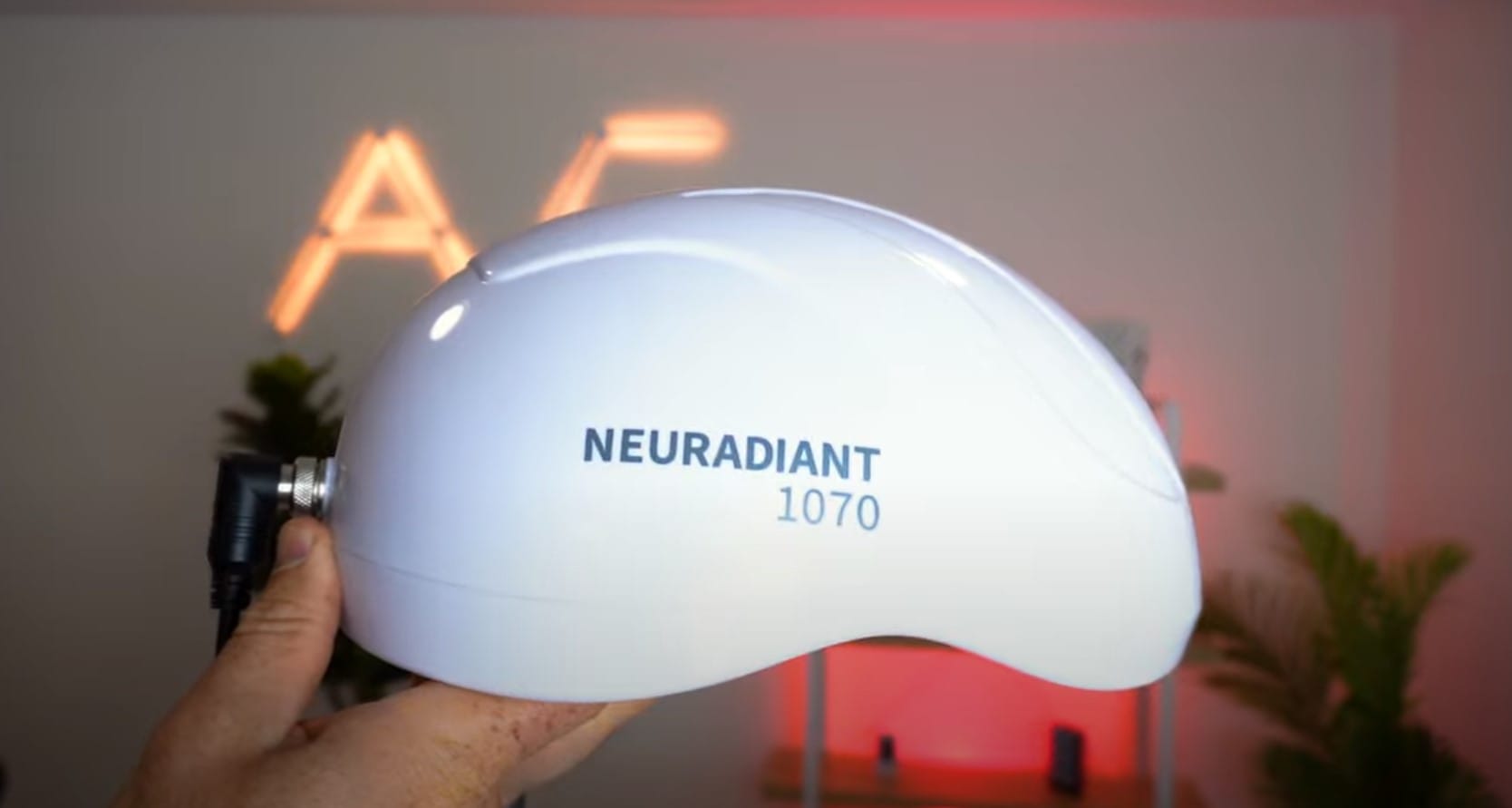
So, the near infrared wavelengths up around that 1000nm to 1100nm mark are deeper penetrating than 800nm and 850nm wavelengths. Plus, there's tons of research available on the benefits of these wavelengths in particular 1064nm.
Now, the research on 1064nm shows that it's benefits include:
✅ overall brain health
✅ brain function
✅ antidepressive effects
✅ learning ability
✅ brain wave entrainment
✅ nerve regeneration
✅ countering neurodegeneration
There's heaps of research behind 1064nm light. It's just a matter of finding the best product and ideal way to deliver that light energy into the brain. That's where of course this product shines.
My Neuradiant 1070 Experience
What about practical implications? Well, I have had this device for a couple weeks now. I have been experimenting with using it in the evenings typically.
I've been using a lot of the Peace and Glow protocols. I have also tried Energy and Focus sessions. In fact, I used Focus just before hitting the record button here. So, I hope I'm coming across as relatively clear and concise.
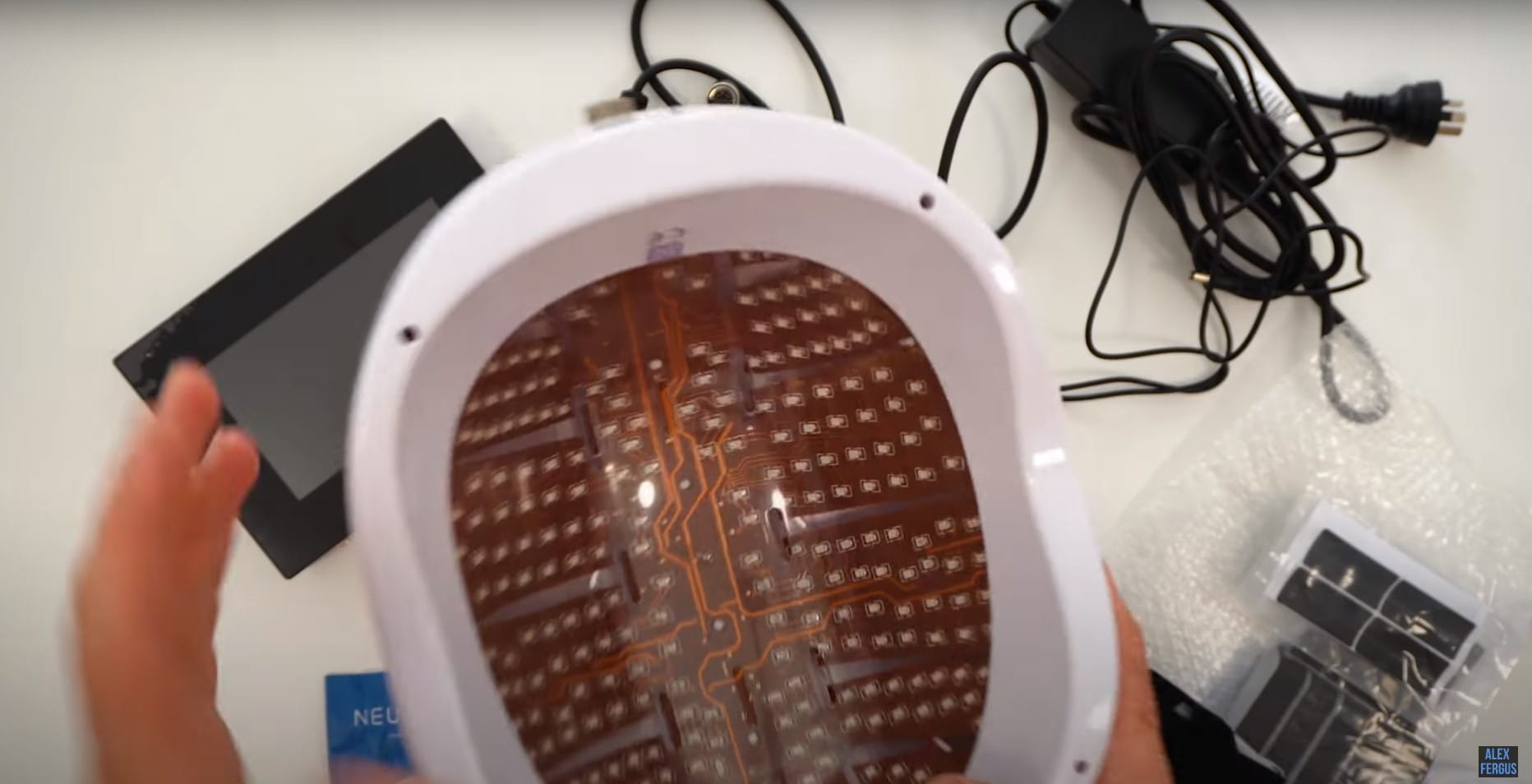
As with any brain health products, supplements, or devices, it's always hard to get immediate feedback. You'd love to use it and then walk away and think, "Now I can suddenly solve advanced math equations!"
I don't respond that way. And this is true for many things I've tested over the years. A lot of the benefits from a device such as this are deeper level, longer-term benefits, especially for those who are suffering from some brain disease. I want to quantify the benefits of using it for my already healthy brain to see if further improvements are possible.
I'm hoping to do some before and after testing of my reaction time testing, maybe even some memory recall testing to really get the most out of this and share my objective results. So keep an eye out for that deeper dive review which will come out later on this year.
Neuradiant 1070 Downsides
When it comes just to general feedback on operations and use, I do have to say that the control panel and all the wires are a little bit clunky.
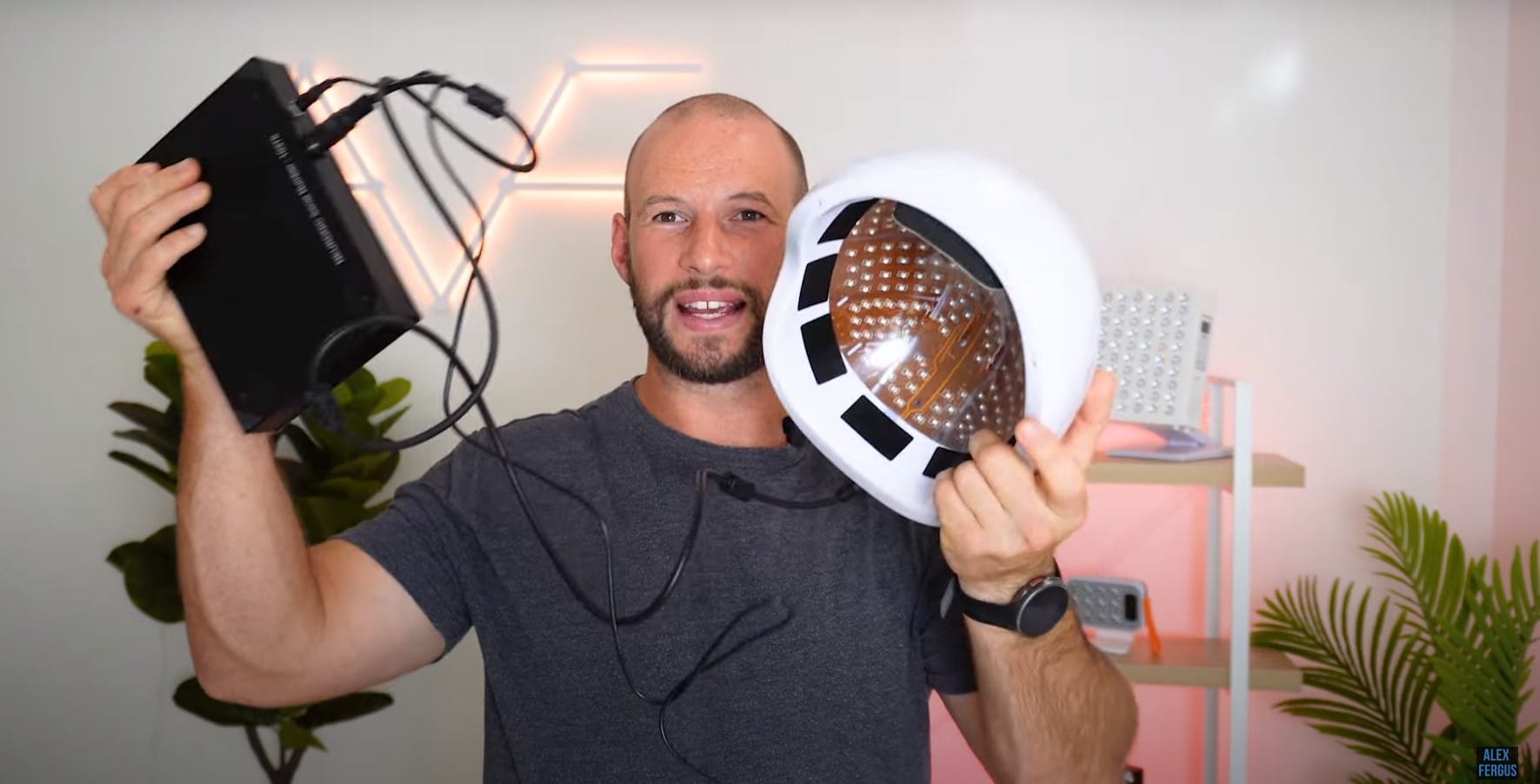
You would like to expect that in 2023 there would be a Bluetooth function where you can do it all on your phone through an app or maybe have some batteries for this so you wouldn't need to plug it in because once this is all hooked up you are kind of stuck in the that location.
Of course the session times aren't too long and you can easily read a book or something. The cables are quite thick though and a little bit uncomfortable.
So really, the only way to know if this is working is simply to measure the wavelengths coming out of it and check its power irradiance. We have done both of those things to share with you. From there, it's all about keeping up with the latest science.
I just don't like giving out subjective opinions on whether something like this works or not. So again, that's where I will be testing it in more detail later on.
Neuradiant 1070 PLUS?
Now, I do need to mention there is another product from this company and that is the 1070 PLUS which splits the LEDs up into four quadrants. You can change the pulse rate in each quadrant.
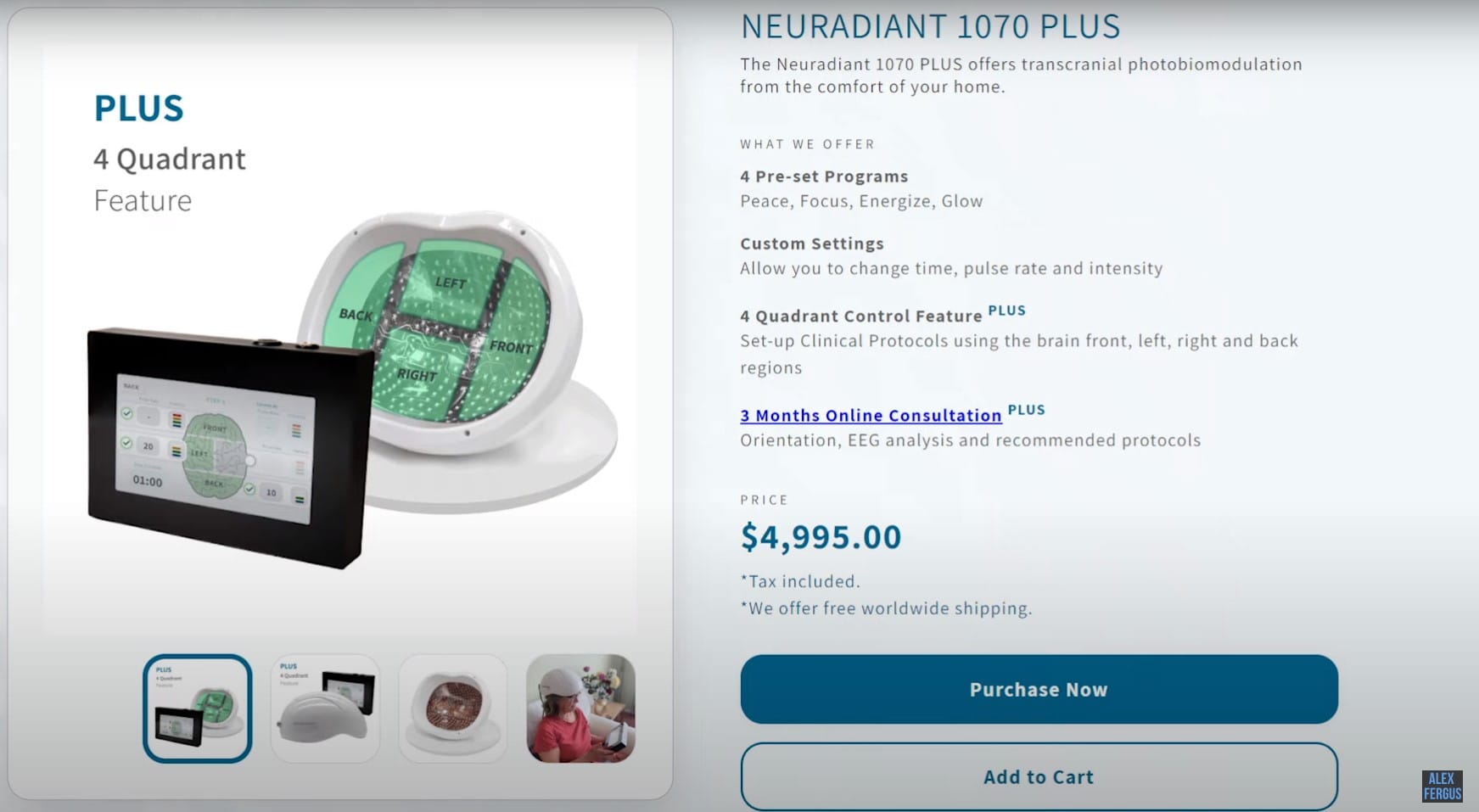
You do get a lot of consultations and questionnaires and some medical support with that product. So again, that's more for the advanced biohacker or for people with some serious health issues.
What about the competitors' products?
It's not a full-coverage helmet. It's more of a headset with small modules positioned strategically around the skull.
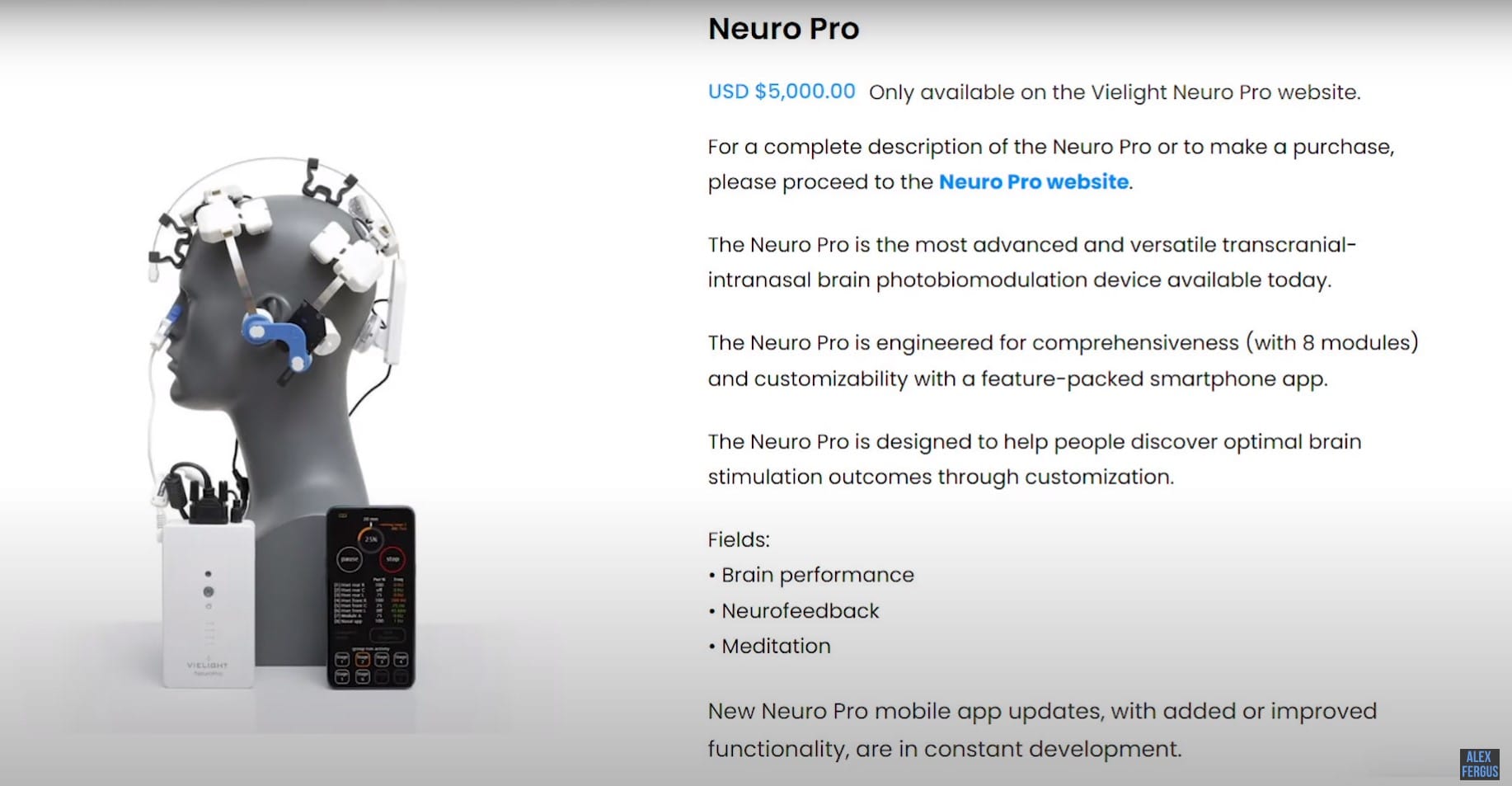
It does use 810nm light instead of the 1030nm to 1050nm light that we're seeing in this device.
Comparison To Panels
How does the Neuradiant 1070 compare to a regular red light therapy panel? Well, it's interesting because, yes, this is a lot of money. But you're getting a wavelength that isn't available in any of the body panels or tabletop panels that I'm aware of at the time of filming.
It doesn't have the longer near-infrared wavelengths that are in the Neuradiant 1070. Instead, you get in about 850nm pulse near-infrared light.
The pulsing features in this headgear device are available in some panels such as this Infraredi Flex Max.
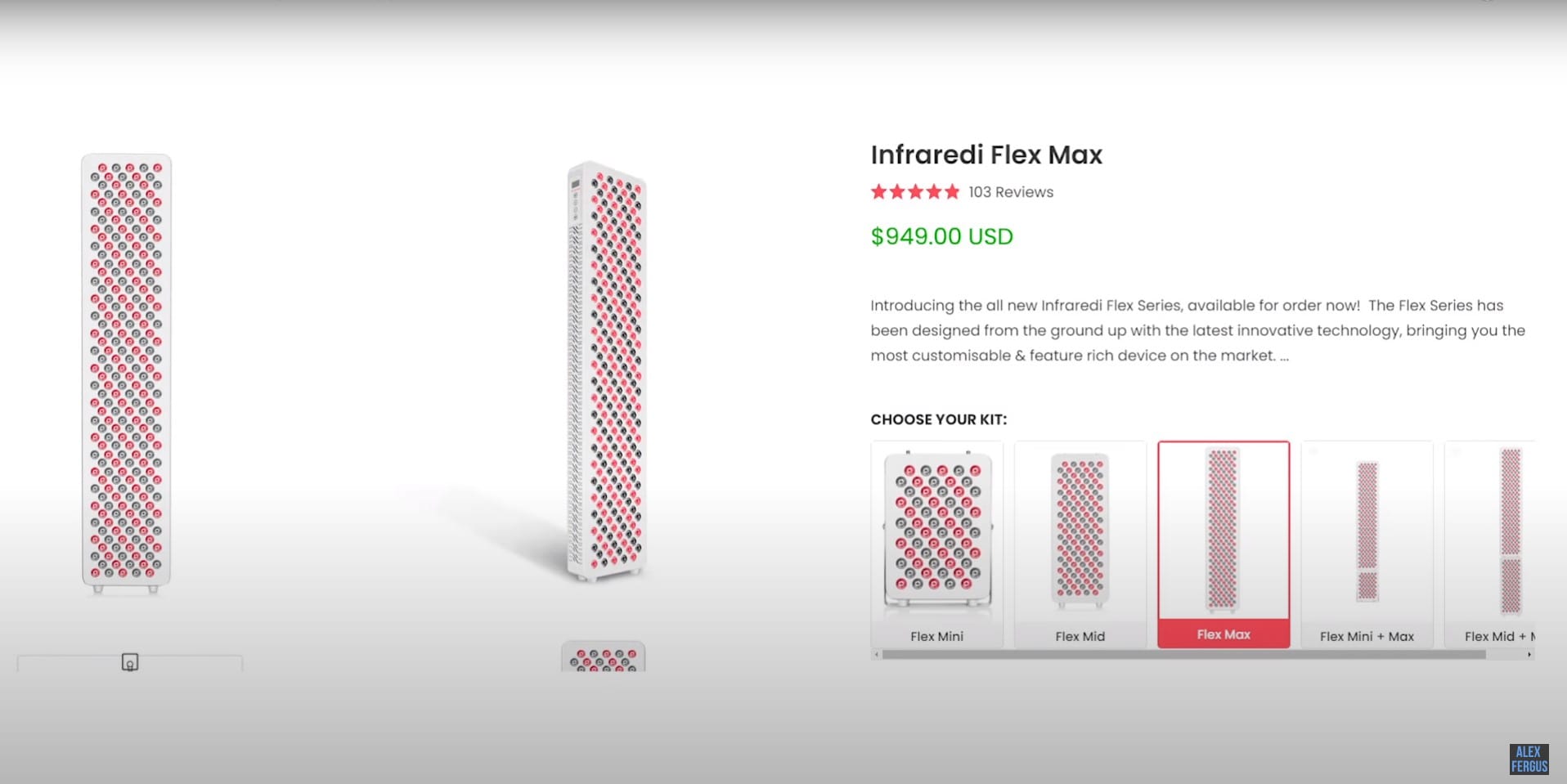
Of course, a panel like that is designed for body treatment not your head. You could target that light onto your head, but you would have to position yourself at the right angle which may be a bit awkward.
You could even lie down on the floor or however, you want to set it up. But you're still not going to get the same sort of treatment that you would with the Neuradiant 1070 since your head curves away from the flat panel.
Other than the price being a big difference, the other thing I need to mention is the power irradiance. The panel is going to put out a lot more power. A panel could have 10 times more power than what you're getting from a headgear device.
That does beg the question: Is more power better?
Even though the panel isn't sculpted to the shape of our head, maybe because it's got higher powered LEDs perhaps the light would still penetrate just as well if not better.
That is a question I will be asking the Neuronic team to see how is their device better than a regular pulsing light panel. Though it's important to remember the key exception is that wavelength difference
Finishing Thoughts
I will be doing a follow-up to this article. I'm also going to be interviewing the creators of this product. And remember, discount code ALEFX5 will save you 5%.
If you have any questions or comments on this article, please leave them below as well because we are all interested in learning more about light therapy benefits for brain health.
This Article's Products With Benefits:
- Neuradiant 1070 and Neuradiant 1070 PLUS by Neuronic - code ALEXF5 saves
- Vielight - use this link and code ALEX10
- Infraredi Flex Max
Extra! Extra! Read All About It!
✅What Is Red Light Therapy?
✅Red Light Therapy For Sleep: The Science of Sweet Dreams
✅Huberman and Light Therapy: Science, Devices and Tips
✅James Carroll Photobiomodulation Course: 16 Amazing Lessons Learnt
✅Red Light Therapy For Depression: A Potential Solution
Be In The Know With These YouTube Videos
✅ Red Light Testing Methods - Spectrometer, EMF Meter & More
✅ How To Use Red Light Therapy 101: Know THIS For Starters
✅ Red Light Therapy Buyers Guide - Avoid THESE Mistakes!
✅ How To Use Red Light Therapy: My UNIQUE Routine
✅ Mito Red Light Helmets Review: OPTIMAL Hair Regrowth OR




